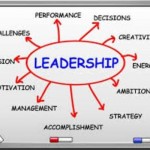Here’s a list of the best advice we’ve given for building and growing a successful organization.
Over the last year, there have been a lot of changes on the business landscape from Yahoo being sold to Verizon to Gawker going bankrupt. Along the way we’ve talked to CEOs of big companies, first-time entrepreneurs, and those working hard every day to make something new. Many have gone against the grain and looked at practices that may seem unintuitive but ultimately helped them find success.
To help you prepare for making change at your own company in 2017, we’ve complied some of the best business lessons we learned this year.
Lesson 1: Look Outside The Box When Sourcing Talent
Though unemployment has been on a steady decline over the last few years, tech jobs are still in high demand. More often than not they are hard to fill. Take the example of security: Cybersecurity jobs are very hot right now, and most companies are having trouble finding and cultivating the right talent. The answer to this problem may be to think bigger. Telecommunications services firm Level 3 has actually found success in sourcing security talent not from their hard labor skills but from their passions, namely from musicians.
Though many people do not know the technical skills that security professionals need, the company found that those adept at music were able to learn how to do the job and excel at it. By casting a wider net and seeking talent from out-of-the-box sources, a few companies have been able to fill gaps where others are still searching long and hard.
You can read about this strategy here: Musicians May Be The Key To The Cybersecurity Talent Shortage Continue reading →
![]()




 by Lars Fæste and Jim Hemerling
by Lars Fæste and Jim Hemerling 
